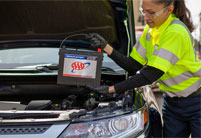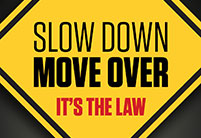Risky Driving - How Can Drivers Kick the Habit?
Risky Driving - How Can Drivers Kick the Habit?

Motor vehicle crashes result in 1.2 million deaths and as many as 50 million injuries each year across the globe. Over 40,000 people die in crashes in the U.S. each year, often the result of risky driving behaviors. Most crashes can be prevented by reducing such behaviors like speeding, hard braking, rapid acceleration, and handheld phone use. But how do you get drivers to change their ways?
Smartphone telematics uses sensors and apps to collect and analyze data about driving behavior, so behaviors can be measured, which could pave the way for behavioral interventions to help individuals improve their driving safety. This may already be happening: a growing number of U.S. drivers are enrolled in Usage-Based Insurance (UBI) programs that price policies according to smartphone-measured risky driving behaviors. These programs provide feedback and incentives that should, in theory, lead to safer driving. However, there hasn’t been much testing, and most UBI feedback is broad.
AAA is committed to finding effective ways to encourage drivers to adopt safer behaviors behind the wheel. The AAA Foundation for Traffic Safety conducted research to determine whether providing feedback and incentives through typical UBI programs improves driver safety.
“This research, with over 1,400 study participants, gauges what motivates individuals to change certain risky driving behaviors,” said Dr. David Yang, president and executive director of the AAA Foundation for Traffic Safety. “Finding ways to reduce these behaviors can positively impact traffic safety and reduce injuries and fatalities on our roads.”
For the study, drivers were recruited nationally, and four of their behaviors were measured: speeding, hard braking, rapid acceleration, and handheld phone use via a smartphone app.
Participants who met a threshold for drives taken were then divided into four groups for a 12-week intervention period with different levels of feedback and advice. An observation group was monitored, but drivers received no feedback. Three other groups were given weekly text message feedback and were eligible to earn $100 for safe driving improvements.
Results showed that participants in all three feedback groups drove significantly better than the observation group. And there were clear improvements in driver behavior in the three feedback groups:
• Up to a 13% reduction in speeding
• Up to a 21% reduction in hard braking
• Up to a 25% reduction in rapid acceleration
Surprisingly, the use of handheld phones remained unchanged during the study, especially given that the other measured behaviors showed significant improvement.
The trial experimentally demonstrated, for the first time, that the kinds of feedback and incentives offered by UBI programs can improve driver safety across a range of behaviors. It also showed that these safety improvements may last beyond a driver’s rating period, lessening concerns that UBI discounts reward risky drivers who only drive safely when monitored.
“It’s encouraging to see that many individuals stuck with safer habits even after the study,” said Jake Nelson, AAA’s director of traffic safety advocacy. “This shows that positive reinforcement, not just punitive measures, can lead to safer driving habits that can save lives.”
AAA will share these findings with other safety stakeholders, policymakers, and industry leaders. The goal is to raise the visibility of possible solutions that will reduce the number of deaths on our roadways.
Safe driving habits are formed behind the wheel and in the class environment. Count on AAA Driver Training to help you and your loved ones prepare for the road ahead.










